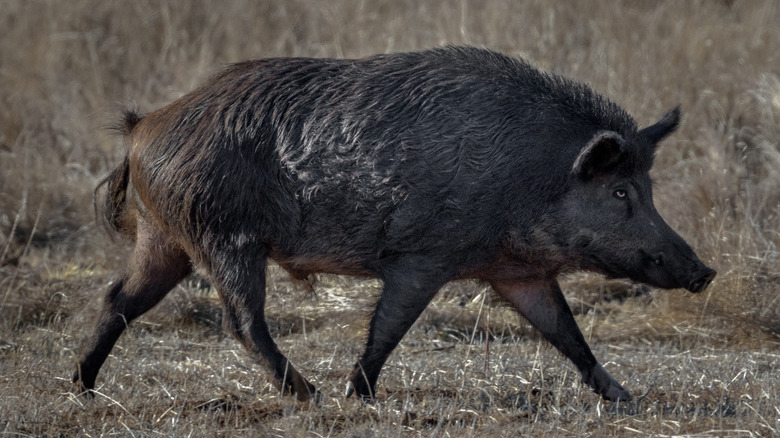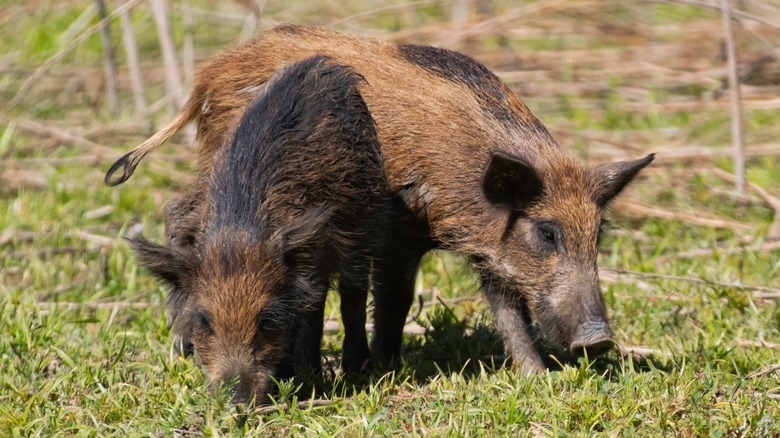The Unnerving Reason These California Pigs Turned Neon Blue
Dr. Suess introduced the world to green ham, but now a group of wild pigs in California has hunters seeing pork of an even stranger color. Wild pigs are widespread across the Golden State, having originated as an invasive species brought by European colonizers centuries ago. Capable of adapting to many different climates, wild pigs are now found in all but two of California's counties. They've become a popular game species for local hunters, but they're also a pest to farmers and ranchers, which is how they landed in the sights of an animal control expert who made a terrifying discovery.
Dan Burton is no stranger to wild pigs. As the owner of a wildlife control company in Monterey County, he's trapped hundreds of them. He usually donates the meat to low-income families, but when he cut open a pig and found its insides were neon blue, he knew that nobody should be sticking a form anywhere near it. The pig in question had come from a ranch that hired Burton to deal with trespassing swine, but while staking out the site, Burton noticed that the pigs were breaking into ground squirrel traps and eating the bait. He knew something was wrong, so he sent samples of the blue meat to the California Department of Fish and Wildlife. After months of testing, the agency released a statement revealing that the unnatural color was caused by a poison in the squirrel bait, and it's not the first time that they've encountered this problem.
The terrifying poison that turns animals' insides blue
When unwanted critters invade your space, you have to choose between biological versus chemical pest control, and the cheap and effective chemical route often wins out. The ground squirrel bait that the feral pigs feasted on contained a rodenticide called diphacinone. Diphacinone is a brutal anticoagulant that kills its victims by causing internal bleeding. The state of California places tight restrictions on the use of diphacinone, permitting it only for invasive species control and special circumstances determined by the Department of Pesticide Regulation. In order to make diphacinone products easy to identify, they are often dyed with bright colors. The pigs that ate diphacinone-laced squirrel bait had their insides turn blue due to the strength of the dye.
Just as the presence of pesticides in fruits and vegetables can present a health risk, eating meat from animals that ingested pesticides like diphacinone can be dangerous. It can make people sick, and in large doses, could even become deadly. The poison can remain in the animal's flesh even after it gets cooked.
Unfortunately, the pigs in Monterey County aren't the first animals to be found with blue guts due to diphacinone poisoning. The grim phenomenon has also been seen in black bears, bobcats, geese, and even the endangered California condor. The state's restrictions on diphacinone only went into effect in 2024, partially motivated by this very issue, but based on the recency of this latest discovery, it's clear that the danger is still very present.

